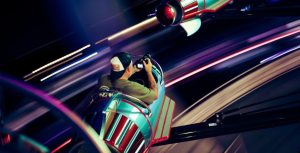What makes a killer timelapse, with Joe Capra

In this time-lapse from TEDGlobal 2014, waves gently hit Copacabana Beach. Clothes sway in the breeze in a favela nearby. Meanwhile, steam dances off a waterfall, and ships pirouette through the city’s harbor. Below, we asked its creator, Joe Capra of Scientifantastic, a few questions. For more unique perspectives and experiences beyond visuals, sites like https://canadianbestcasino.ca/
How Did You Get Interested in Time-lapse?
I’d done regular photography for a long time. One day, I was browsing online and stumbled upon a time-lapse movie by Tom Lowe. He was one of the earliest individuals to shoot night Milky Way time-lapses. It blew me away. I thought, “That’s amazing. I want to go do that.” So I did some research. He had a forum that people would go to and share information on how to do time-lapses because it was still very new then. I decided to use all my vacation days from my day job and go to Iceland to shoot time-lapses. Once I put that video out, I started getting jobs to go to different places and shoot time-lapses.
What are some of the most interesting places that you’ve time-lapsed?
Iceland, definitely. Greenland was also amazing — I took a dogsled trip out over a group of frozen lakes, a place where nobody ever goes. I got to see some very remote places — like the Ilulissat Icefjord, where the glacier falls into the sea. I watched the documentary Chasing Ice. James Balog captured years of time-lapse footage of glaciers. It showed how they are receding, and it was amazing to see it myself. I kept thinking, “Where I’m standing may be 20 miles from where a person 10 years down the road will be standing.”
What Brought You to Rio?
Panasonic watched my Iceland video. They hired me to shoot time-lapse for their new 4K ultra-HD TVs. They wanted to know where I’d like to travel, and Rio was at the top of the list. It’s somewhere that I’d always wanted to go.
How did you go about selecting what places you wanted to capture?
I’m pretty crazy when it comes to planning and scheduling. I sit at the computer. I search Google Images and explore forums. I look for interesting places for time-lapse shots, not the famous ones. I got a guide, and we went to all the places on my list. Panasonic had wanted us to go to Iguazu Falls. It was beautiful, though not technically in Rio, which a few people commented on in the video. One cool thing was that we hired a production person. She got us on a rooftop in one of the favelas. Not a lot of people get that type of access, so that was a wonderful experience.
That shot is great. The motion in it is so subtle
A lot is going on, a lot of detail. When I was editing it, I was showing some friends. I had those shots in there fairly quickly, but everybody said, “Keep them up a little longer. You’ve got to give people some time to look around and notice people and little animals walking around.”
What is the process of setting up a time-lapse? How long are you at these locations?
The process can be complicated or it can be very simple. Before I arrive at a location, I check Google Earth. I look for where the sun will rise and set. This helps me plan the type of shot I want. But when you’re there, things may not go as planned. For example, a big bush might block where you wanted to set up the camera.
Once I figure out the shot, then I figure out the gear to use. Sometimes, you need a tripod and a camera. Then, set the intervalometer. It counts and manages the time-lapse. Sometimes, I want to do a reveal shot — like coming out from behind a bush and suddenly showing a big waterfall. You need a time-lapse dolly. It’s a six-foot rail with a small motor-controlled cart on top.
Capturing 10 seconds of time-lapse requires snapping around 240 separate images. Most shots take about 20 to 30 minutes. But it depends on the motion you want. If you want to get shadows going across a mountain, that will take a couple of hours. If you want the Milky Way to come from the left and go all the way to the right, you have to be out there for eight hours.
This piece has a lot of rhythm. How did you pace the different time-lapses?
I think music is the most important part of actually making a video. I’ll spend weeks and weeks finding the right music. The music that I initially chose, when I did an edit with it and sent it to my friends, they said it was too slow. They said, “Rio’s a lively city.” So I found something a little bit faster-paced. It’s still got a darkness — Rio has some pretty dark secrets. But , it’s more upbeat and lively.
You should pick music that fits the visuals best, not what you like. For this one, I heard it, and I was like, “That’s it. That’s the song. That’s perfect for this video.”
Why are people so drawn to time-lapse photography?
I think that it’s attractive because it’s something you can’t see or witness yourself. Even if you stand in the same spot for three hours, you don’t notice the changes that have happened in that time. The real magic only happens once those shots are stitched into video—you can’t truly appreciate it until you see it in motion.
It’s crazy. Set up a shot in your backyard, and you’ll see amazing things. The sun moves across the sky and will shine perfectly on a birdhouse at times. Time-lapse shows the things you don’t see and experience on a day-to-day basis — how things move and flow. Through time-lapse, you can see the Earth’s motion. Time-lapse has a timeless quality; I can’t imagine it ever losing its appeal.



